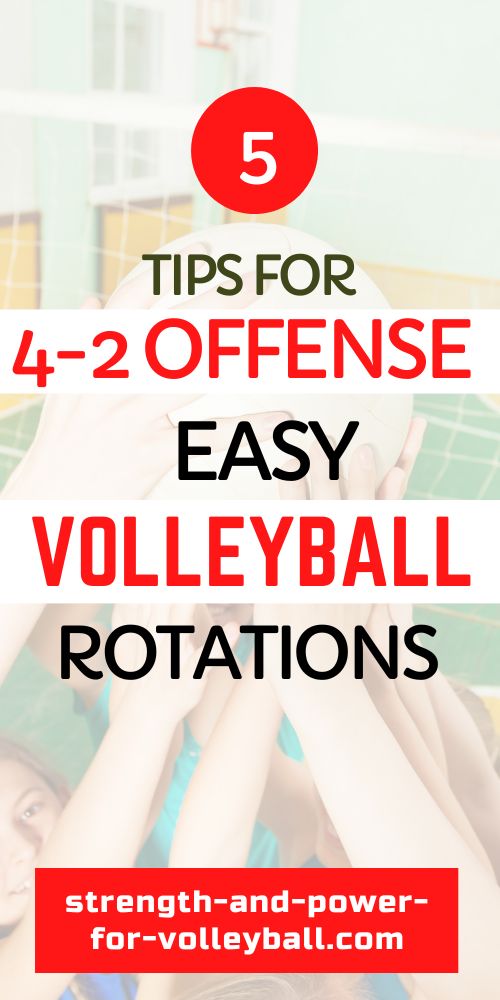Volleyball Formations 4-2
Serve Receive Rotations
Volleyball formations 4-2 for learning how to line up in rotations.
The 4-2 offense is the most basic offensive system in volleyball.
The 4-2 system is the easiest system because the setter is always on the front row which makes things less complicated.
With the 6-2 system, the setter must transition from the back court. This makes serve receive more complicated and confusing.
With the 4-2, the setter is always positioned near the passing target area.
With a 5-1 system, the setter is front row half the time. With a 4-2, you have a setter setting from the front row all the time.
The following are some advantages and disadvantages to running a 4-2 offense.
Reasons You Might Want to Run a 4-2 Offense
- If you have two middles that both hit slides.
- If you have two setters that like to dump or attack the 2nd ball.
- If your right back player plays good defense.
- If your setter has a tough time transitioning from the back row to set.
Since the setter is on the front row for the entire time, all the back row players can focus on playing defense.
Strategies for Running a 4-2 Offense
- Have the setter positioned near the net ready to set. This is the biggest advantage of the 4-2 system. The setter is at the net ready to receive the pass from a teammate.
- You can pass tight when the setter is front row. Train your setter to become comfortable with the tight pass. Have the team pass tight to the net. Give the setter the option to attack or set. This puts pressure on the blockers. Is the setter going to set? Is the setter going to dump? The opponent must read and react to get in position to block and defend.
- In serve receive, have the setter positioned near the target area. The 4-2 system allows the setter to be positioned near the target area. Since the front row setter is already near the target area, they will have an easier time getting to the ball to deliver a good set.
- Run a faster offense. The 4-2 is a good option for when a team wants to run a faster offense. A shoot to the outside or quick set to the middle hitter can make it more difficult for the opponent to defend. A quick attack on 2 by the setter is another option.
- Have the Middle hitters run slides. The setter can set from the middle of the court as the Middle hitter does the slide attack. When running the setter out of the back row, the slide attack is complicated because there are 3 attackers on the front row. The slide attack is much simpler when the setter is front row.
The 4-2 can be tough on the opponent’s middle blocker because the middle blocker has to wait to see if the slide is happening.
To run the slide effectively, passers should pass more to the middle of the court rather than the right side. This will give the Middle hitter more room for the slide approach. A pass tight to the net will make it tough for the opposing middle blocker because focus will need to be on the setter for a possible 2nd ball attack.
Positions and 6 Zones for Volleyball Formations 4-2
The court is divided into 6 zones. There is a player in each zone. The setters are in opposite zones. The Middles are in opposite zones. The Outside Hitters are in opposite zones.
To help prevent being out of rotation...
- Know your opposite
- Know who you follow
- know who follows you
If you get lost on the court, look to see where your opposite player is. For example, if your opposite is lined up LF, then you know you must be RB. If your opposite is on the front row, then you know you are on the back row.
If the player you follow is in MB then you know you must be in RB. If the player that follows you is in MB then you know you must be in LB.
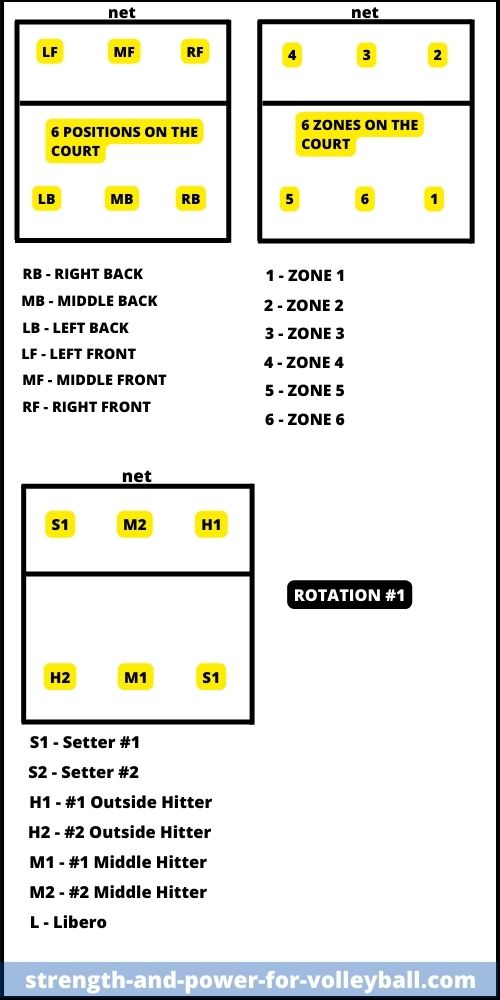
Rotation 1
In serve receive for rotation 1, the setter is LF and needs to move closer to the target area. To help the setter, you could have the team stack players to the right side. This would help the setter be closer to the middle of the court. This would work well of you have an attacker that likes to attack on the right side.
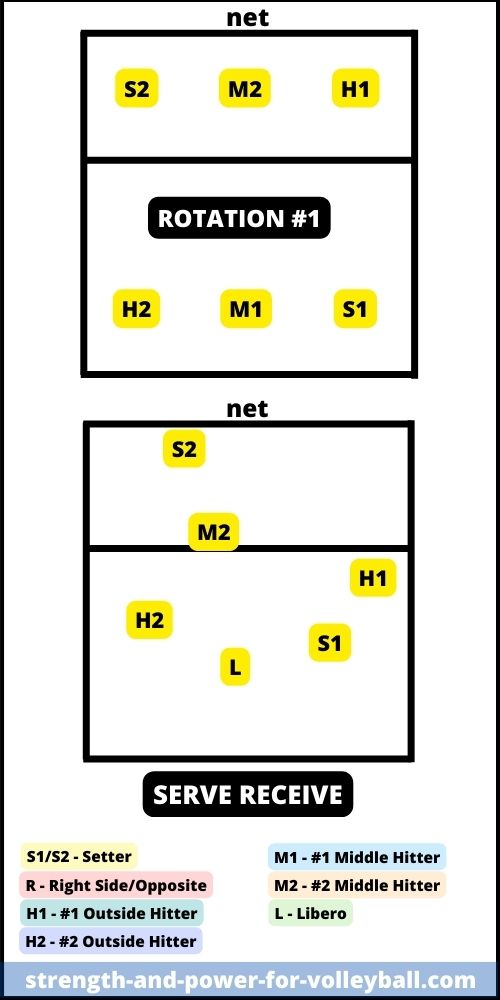
For serve receive in rotation 2, the front row setter is in the middle. This is an easy rotation because the setter is in the middle at the net.
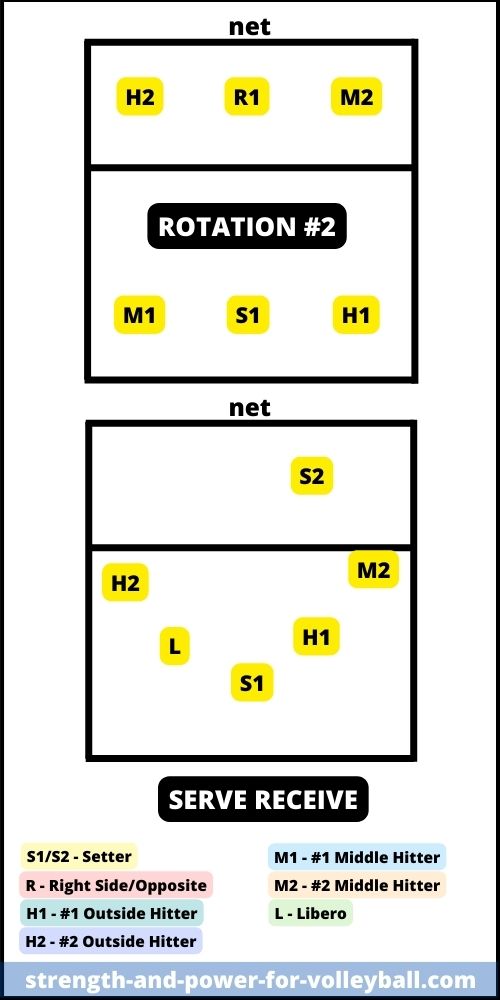
For serve receive in rotation 3, the setter is right front. The front row attackers can easily adjust where to stand. For example, if the H2 wants to hit on the right side, the setter could easily move to the right side of the court.
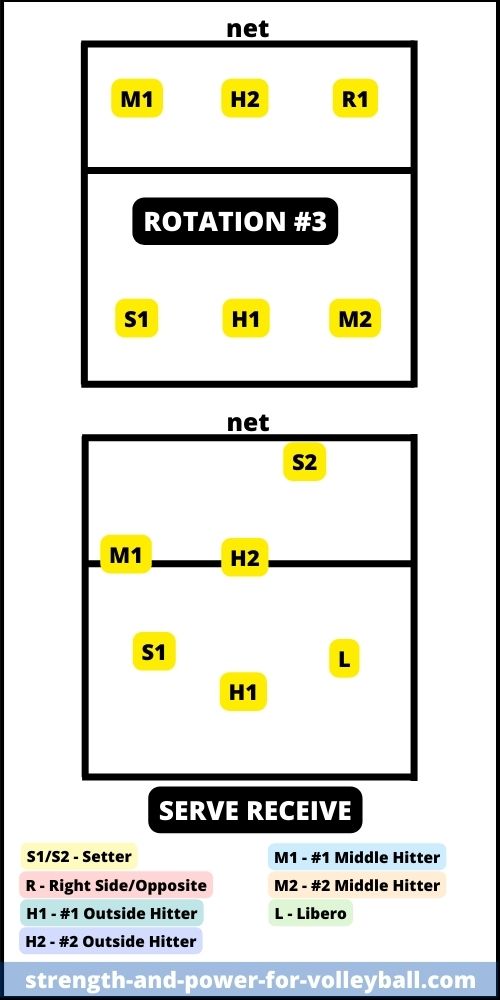
For serve receive rotation 4, is much like rotation 1. Rotation 1 and rotation 4 are basically the same. This is an advantage of running a 4-1 offense. Rotations 1, 2, and 3 are similar to 4, 5, and 6 respectively.
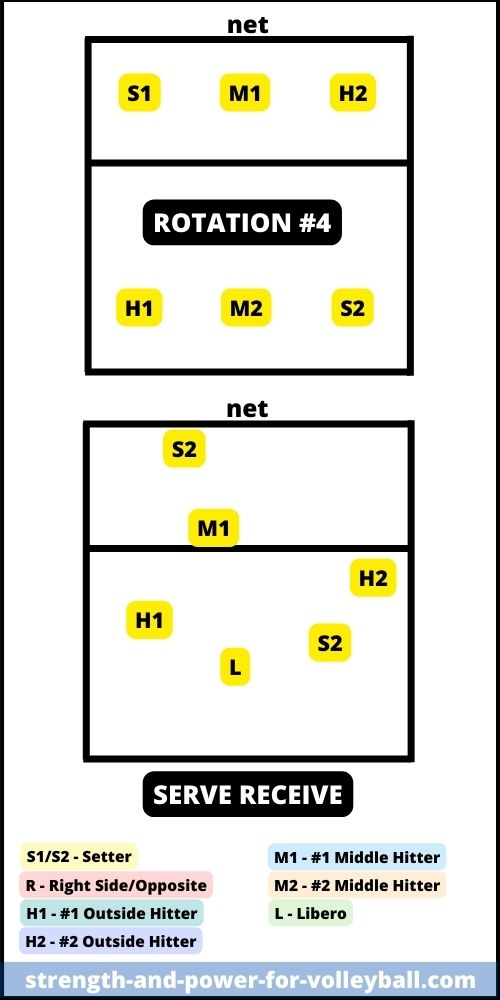
Rotation 5 is similar to rotation 2. With the setter MF, the team can easily make adjustments.
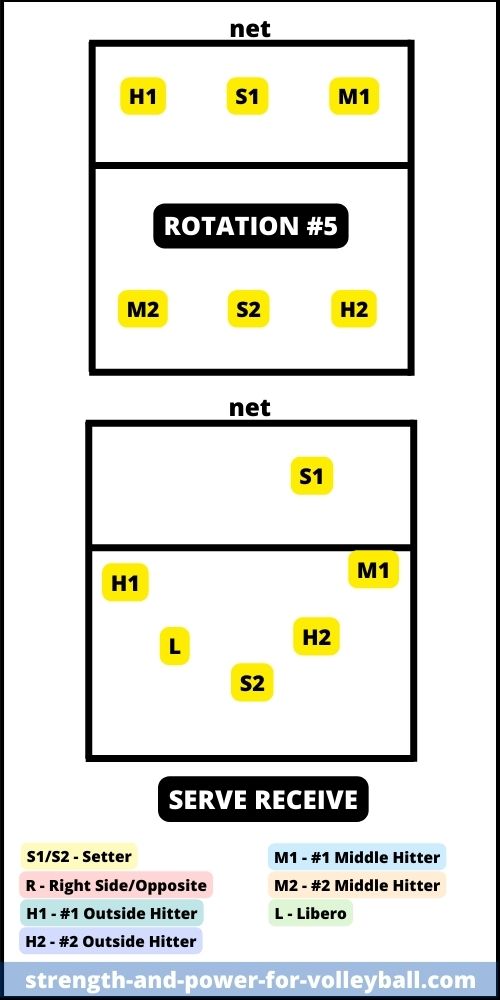
Rotation 6 is similar to rotation 3. With rotations being similar, another advantage is how easily the team can adjust the line up. For example, you can easily switch H1 and H2 in the line up for the next set or match. Or switch positions of the setters. This can be effective for when the setter and hitter are not connecting well. Or if the team is struggling to pass, simply change the line up by switching the opposite players.
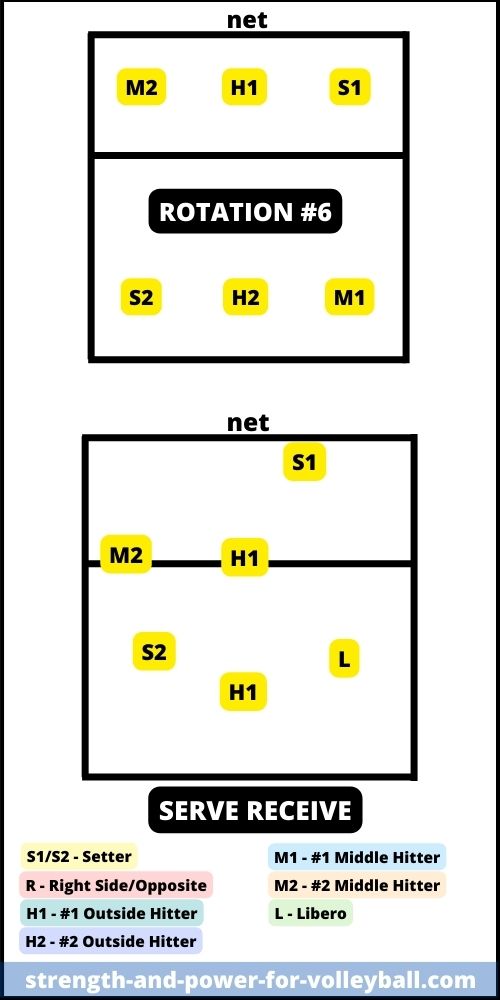
Volleyball Formations 4-2
If you enjoyed these tips and would like to keep it close to you at any time, just save this pin to your Pinterest Volleyball Training Board.
- Home
- How to Play
- Volleyball Formations 4-2
- Home
- How to Play
- Volleyball Formations 4-2
Your second block of text...
